A Quick Guide to Chocolate
Doubtless you've been taken in by the mass hysteria that seems to engulf large sections of the populace at the very mention of chocolate. However, you've not understood what the fuss is about, even though you dutifully nod and sigh with the rest at the sound of the word. Well, here's your chance to really know something about chocolate. Read on...
All I know is that I looove chocolate!
If that's all you know, then you're no different from the mall-hopping gourmands who will inject themselves with cocoa butter if they could. As with most things that can be enjoyed repeatedly, the more you know, the more you enjoy. In this FAQ I will tell you my opinion of chocolate, if for the sole reason that it'll give you an opportunity to realise that there can exist hues of opinion in this matter.
Everyone loves chocolate, right?
Well, not exactly.You may have read plenty of articles extolling the property that chocolate has in releasing the same endorphins in women as when they have sex. In my own unscientific opinion, I think that's bogus, and people repeating the same "fact" raise doubts in my mind about how much they know about either topic. I know plenty of women who do not enjoy chocolate and plenty of men who do. Unless we have become particularly dysfunctional as a species, the fact can't be much right.
Then, there's the question of what people really like when they say they like chocolate. I consider myself a chocolate fan, but I shudder at the vile victuals other fans will eat in the name of chocolate.
Chocolate comes from cocoa beans, the best of which are grown in South America and Africa. The ancient South Americans made a bitter drink out of the bean and served it to royals only - perhaps as an inside joke among the proletariat. It was the Europeans who discovered how to make chocolate into a confection. And mass-produce it along the way. The basic process involves extracting cocoa butter - just the fat - from the beans, cutting those with milk fats and adding sugar, and then adding powdered cocoa. That's chocolate, in or out of a nutshell.
So much for the simple part. The trick in making good chocolate is controlling the percentage of cocoa in the final product, the percentage of milk fats and the additives. More cocoa will make the chocolate more bitter. The bitterness can be reduced by adding more milk fats, but there's the risk of ending up with solid hot chocolate.
Here comes Controversial Statement #1:
The ideal percentage of cocoa in chocolate is 72.After you take a break for venting your dissatisfaction with this absolute, let me explain. This ideal percentage is what I like, naturally. Frankly, deviating from that number by about 10% is also fine as long as there are compensating factors. I've had 88% chocolate that was very tasty, but that's at the upper limit for me. Any more, and it feels like I'm eating baking chocolate (which is 99-100% cocoa). I've had 60% chocolate, and that's definitely the lower limit for me. Any lower and I feel like I'm chewing on solid milk. So much for "everyone loves chocolate". As it turns out, there's some support for my assertion - see SeventyPercent.com.
I could eat chocolate all the time!
Good for you then, but I think it's easy to overdo chocolate. My limit for good chocolate is about half a bar a day, not everyday though. For everyday consumption, a piece or two is plenty. For not-so-good chocolate, the limit falls dramatically. Once you start tampering with a basic tasty bar, the limit can fall fast.Hot chocolate is not chocolate - it's mostly milk. White chocolate is not chocolate - literally - because it's only cocoa butter. In other words, all the goodness of full fat with none of the benefits of chocolate. And here comes Controversial Statement #2:
Peanuts and chocolate are a terrible combination.I'm well aware of America's fascination with the Snickers bar or peanut butter and chocolate, but I choose to run counter to the grain. Chocolate in conjunction with peanuts is one of the few foods I will not touch.
Many other additives are tasty though, especially in low-cocoa chocolates. Hazelnuts, walnuts, almonds, coconut, mint, lemon, orange (especially orange!), green tea, champagne, and... chilli powder. Those of you who have seen the movie Chocolat know of the Mayan secret ingredient in their hot chocolate - chilli powder. These two tastes go surprisingly well together. Try chocolate and good-quality beef jerky together. Or throw half a bar of chocolate in your next batch of chili. You'll see what I mean.
And that's about all I have to say. Milk chocolate, bad. No matter what Godiva or Hershey's tries to sell you. Dark chocolate, good, with a "sweet spot" of 72%. In fact, recently, dark chocolate was found to have the same kind of antioxidants as red wine, which seems to be good for us.
Can you recommend good chocolate?
Sure. On the right is my "rogue's gallery" of chocolate I have enjoyed repeatedly. Any of these would be a welcome addition if I were stranded on a desert island. No, I am not pitching for any of these products or companies - I couldn't care less for the companies even if I like these products. Besides, I value my objectivity in matters chocolate. You're welcome to start from here and cultivate your own taste-cost ratio. Click on any image to view a larger size. Another place you could go to see some chocolate wrappers is this collection. Good luck, and enjoy! |
 |
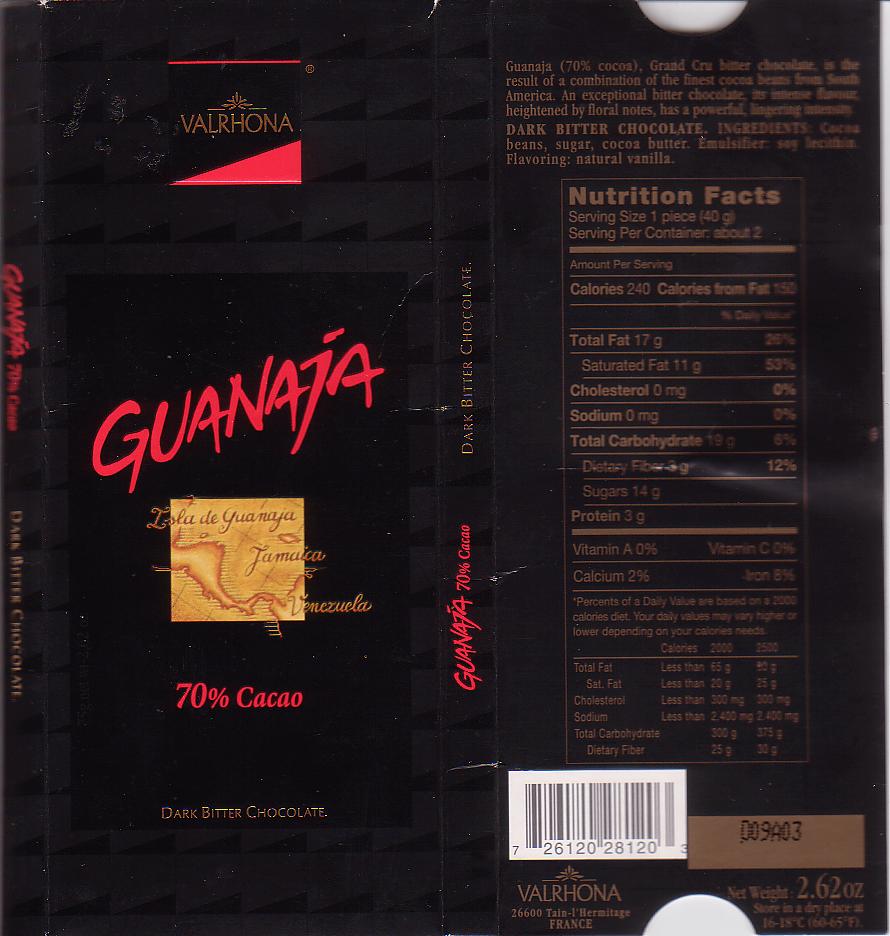 |
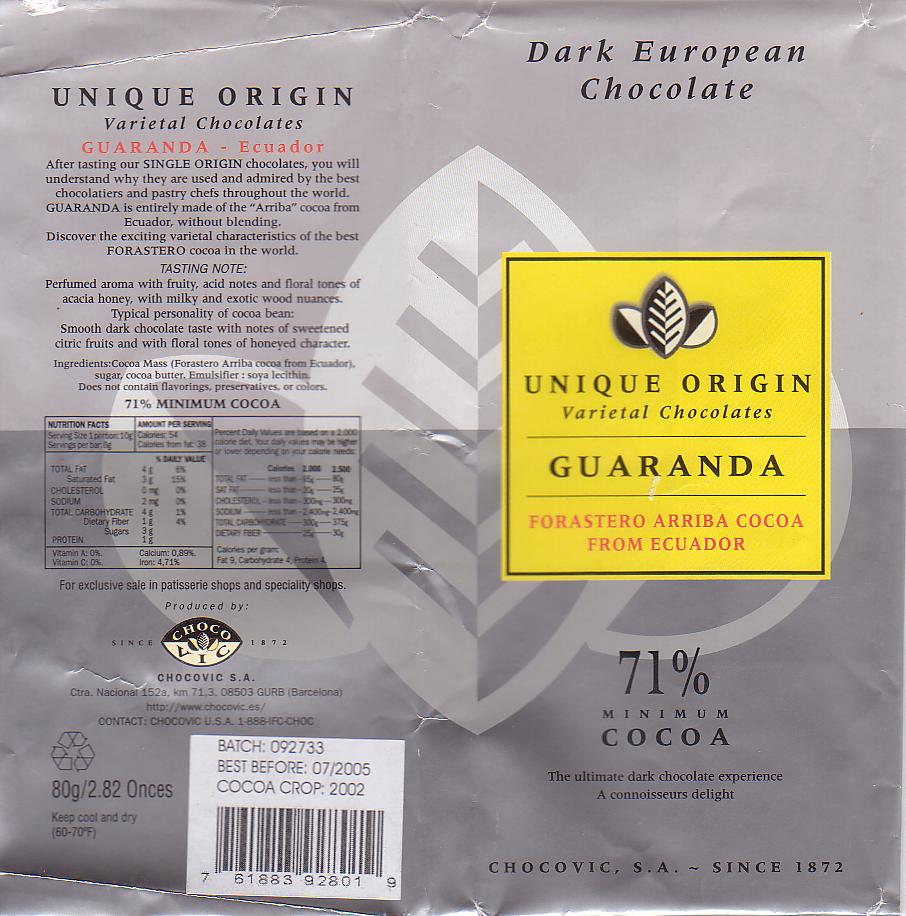 |
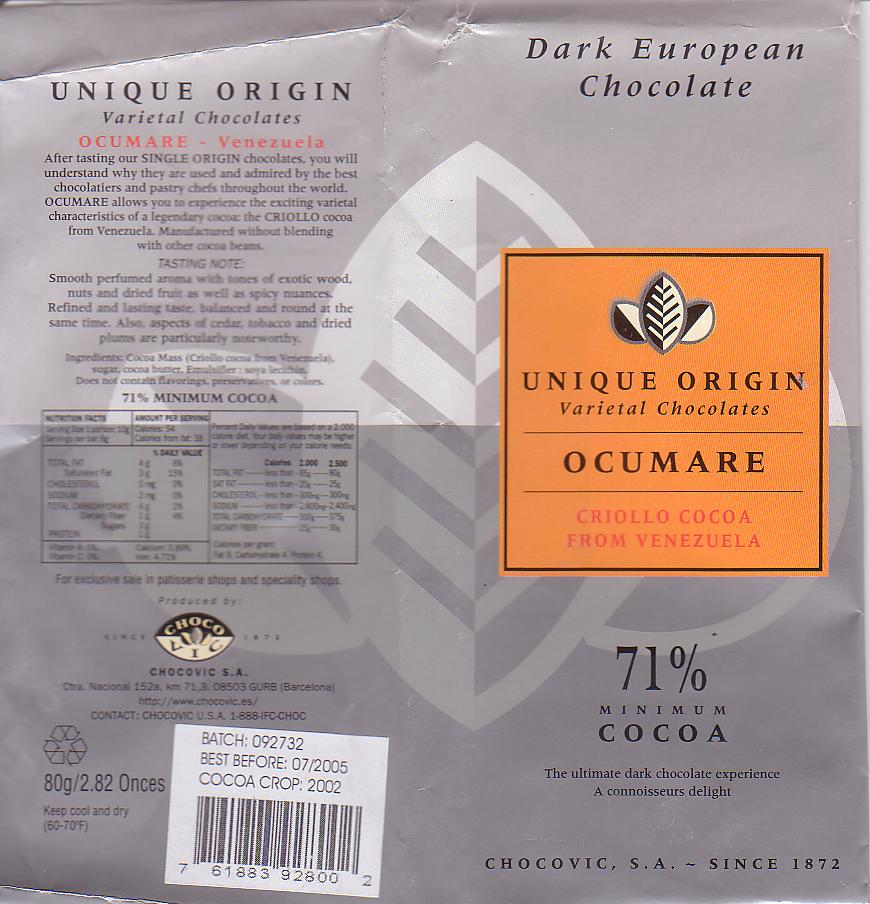 |
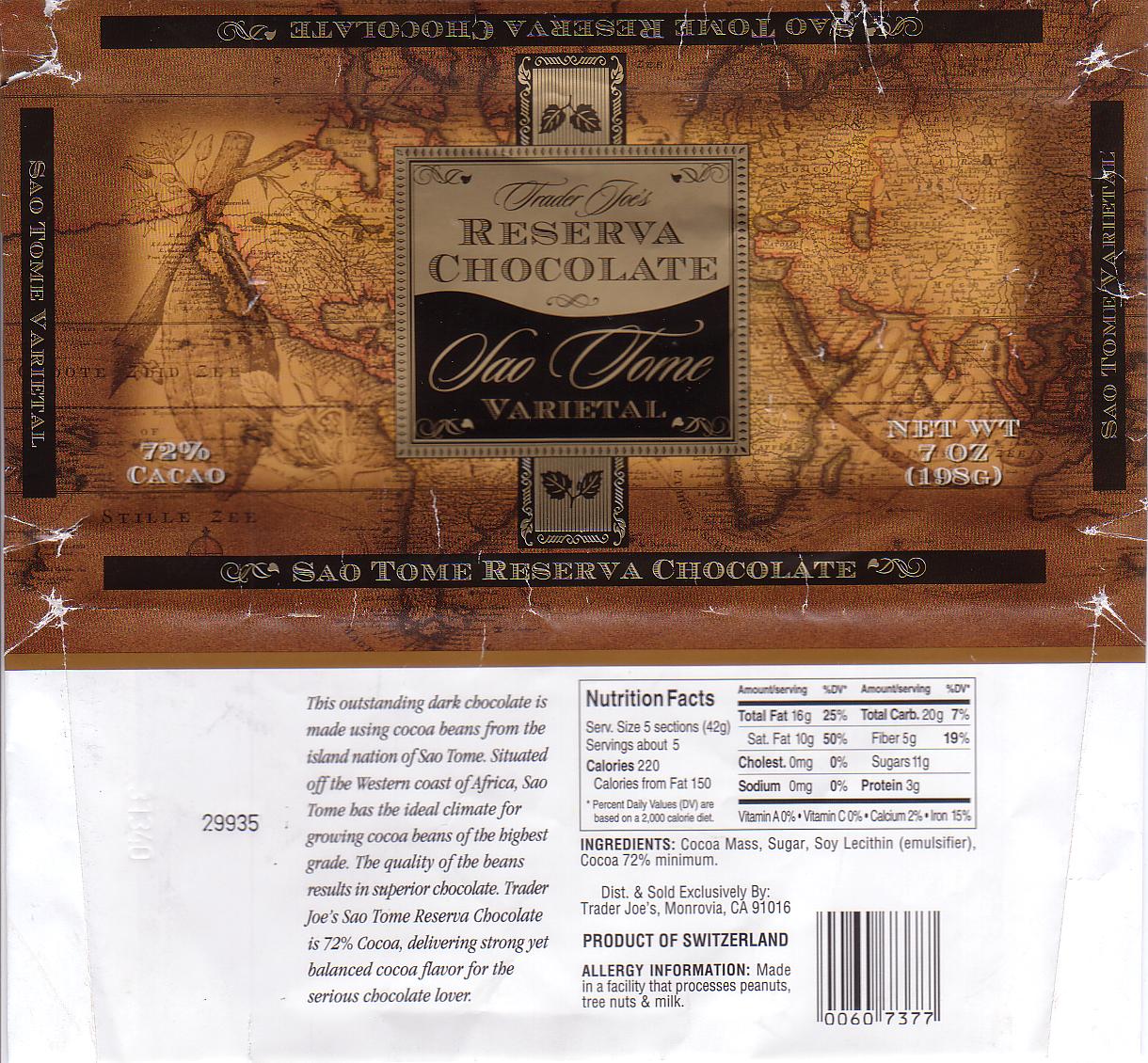 |
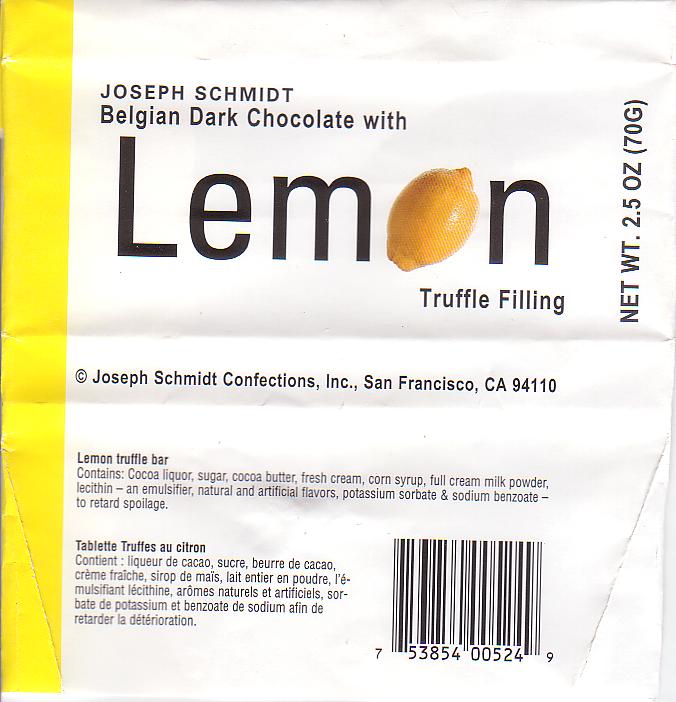 |
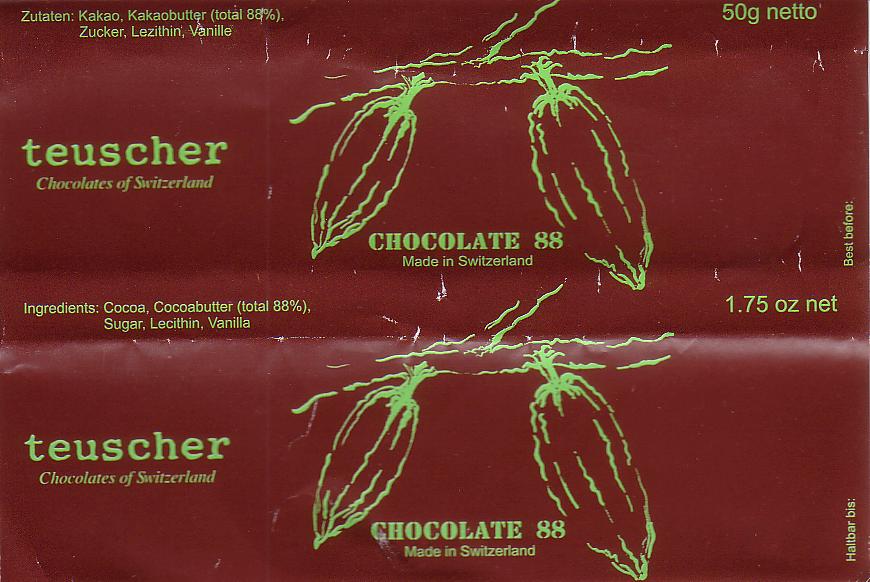 |
 |
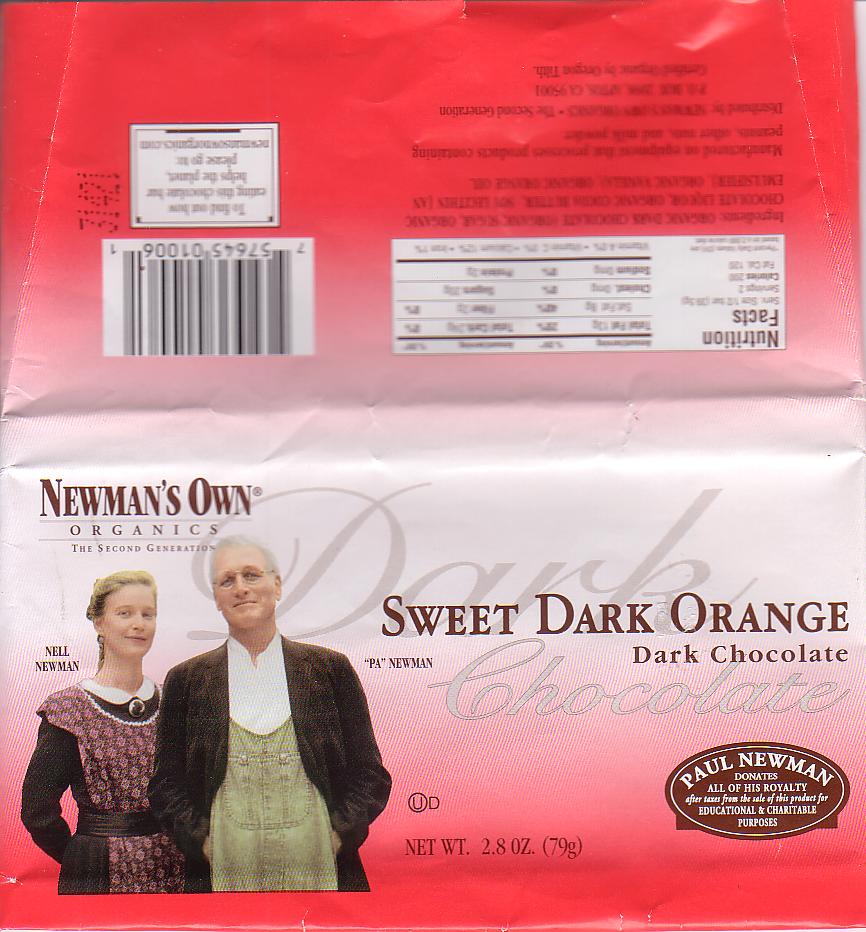 |
 |
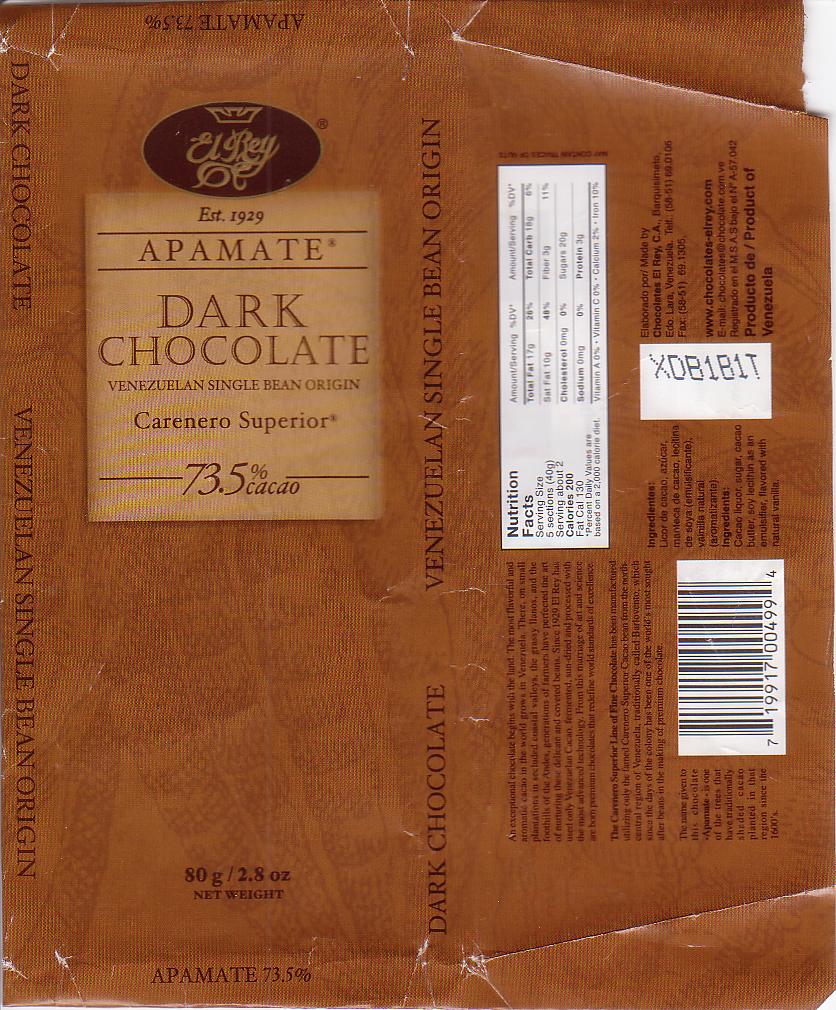 |
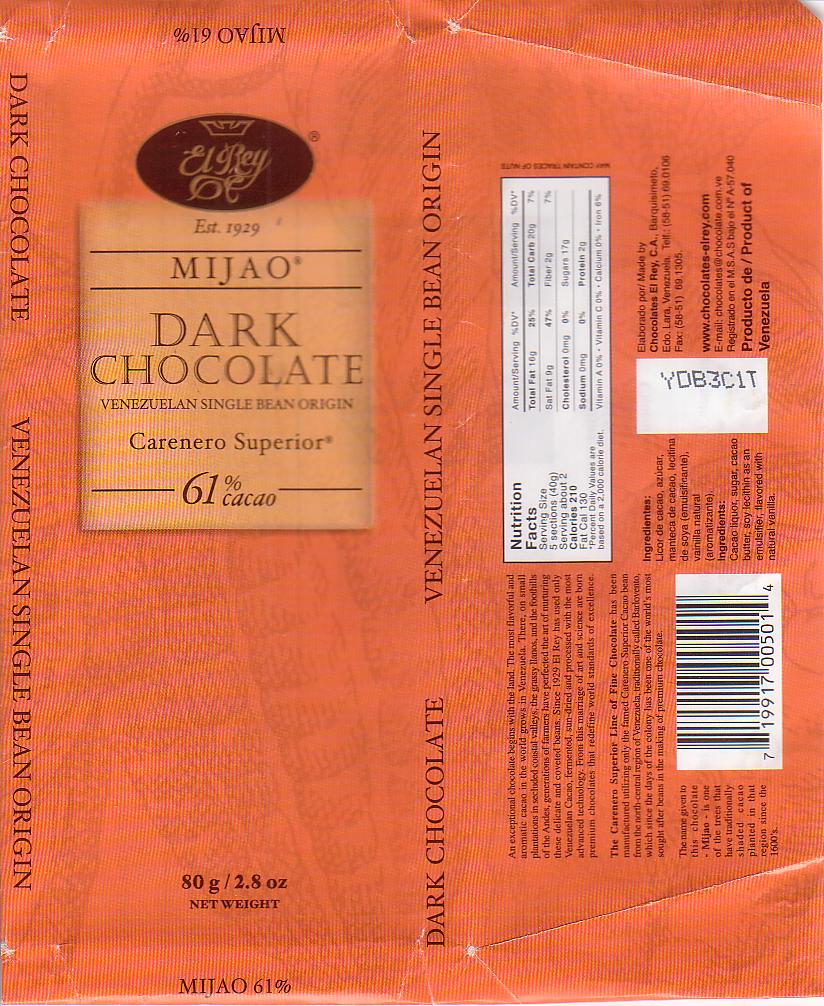 |
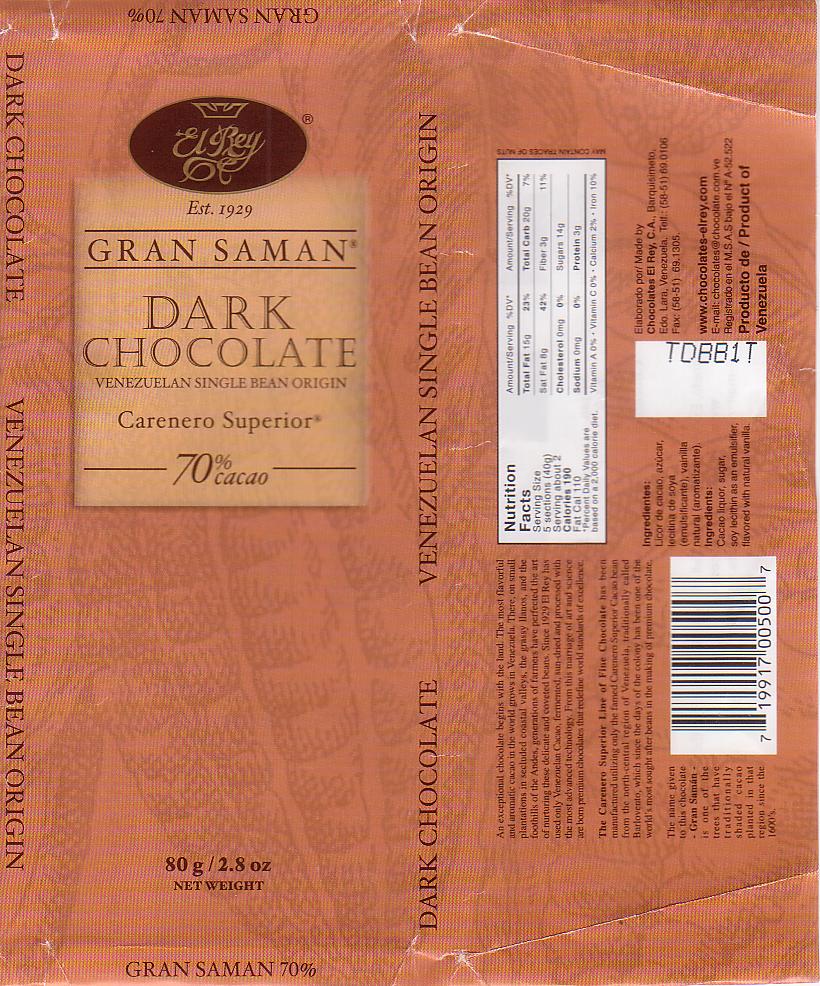 |
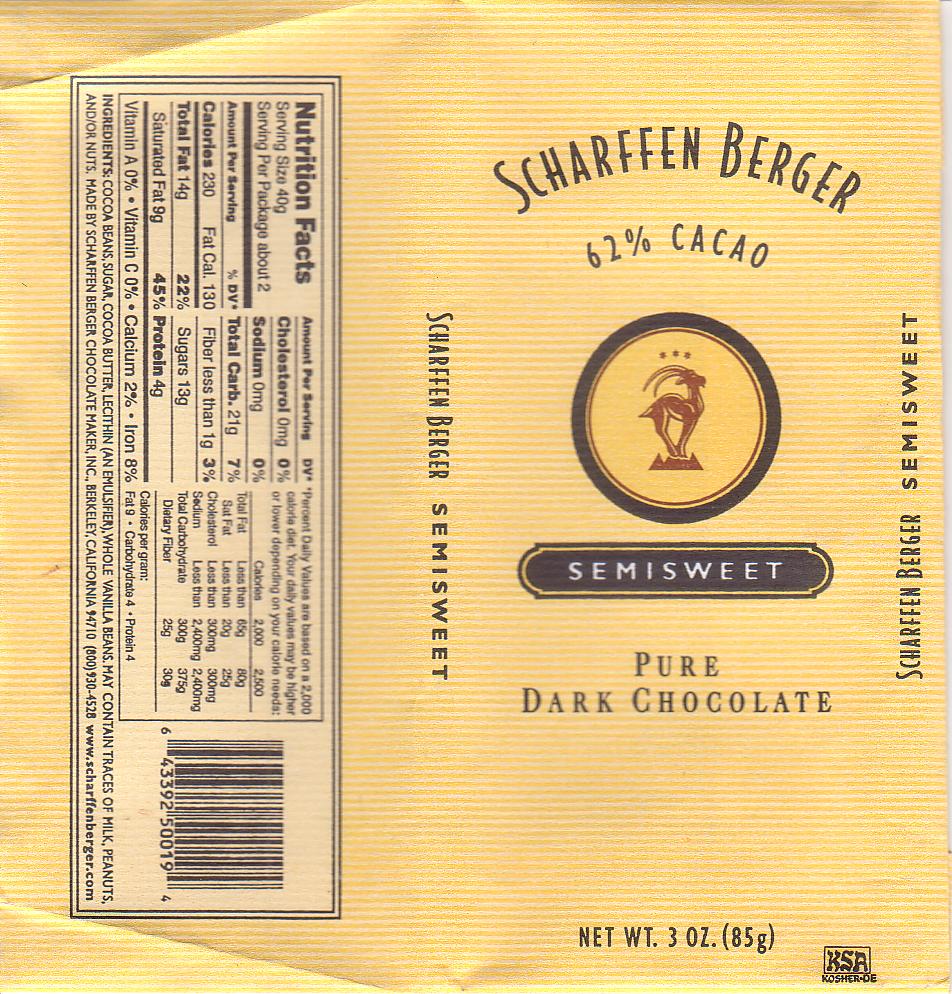 |
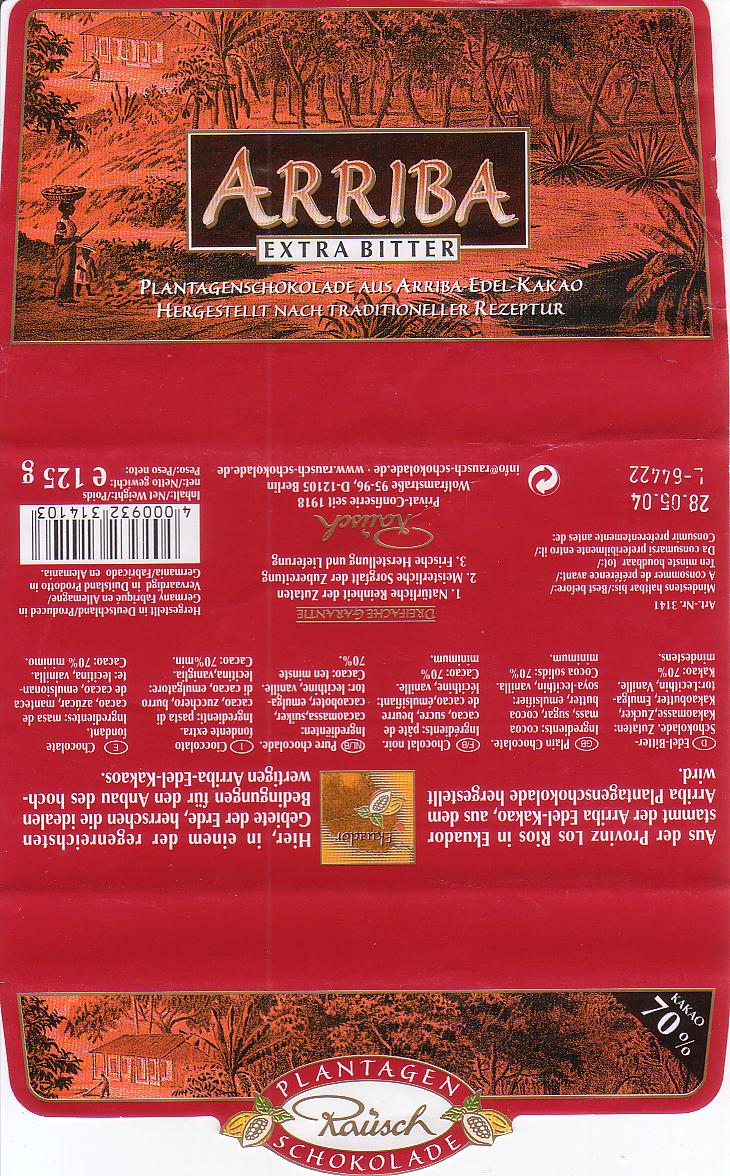 |
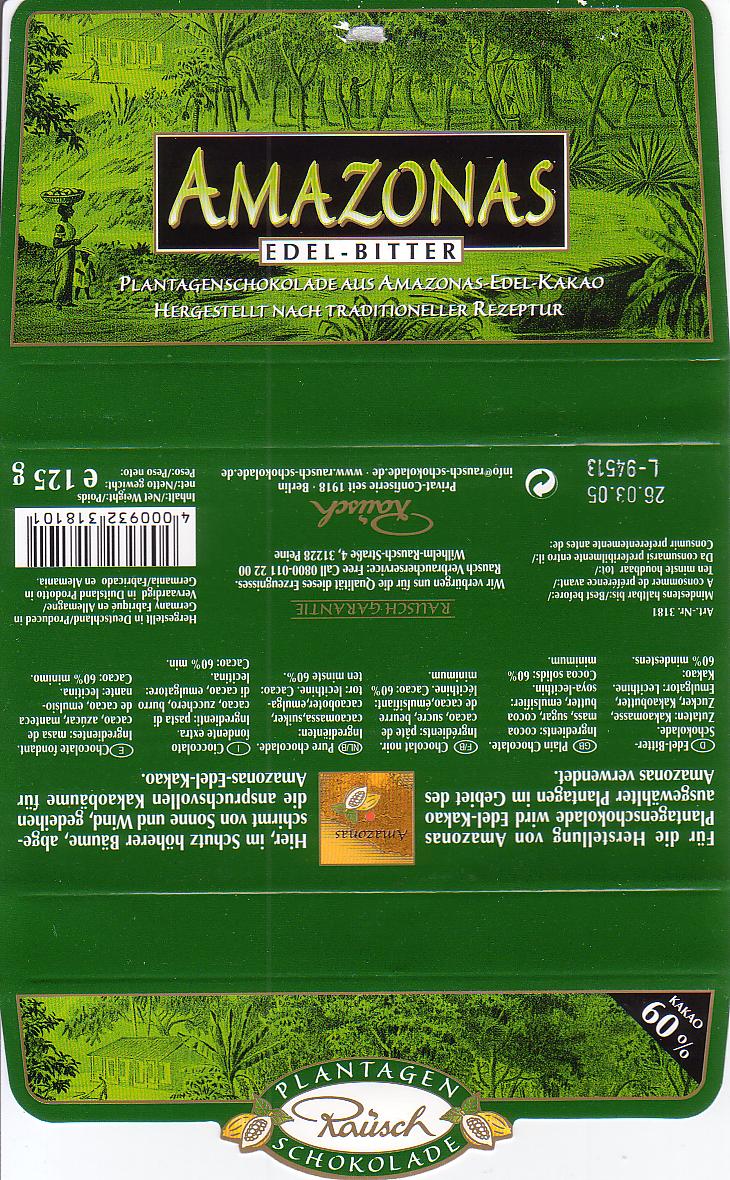 |
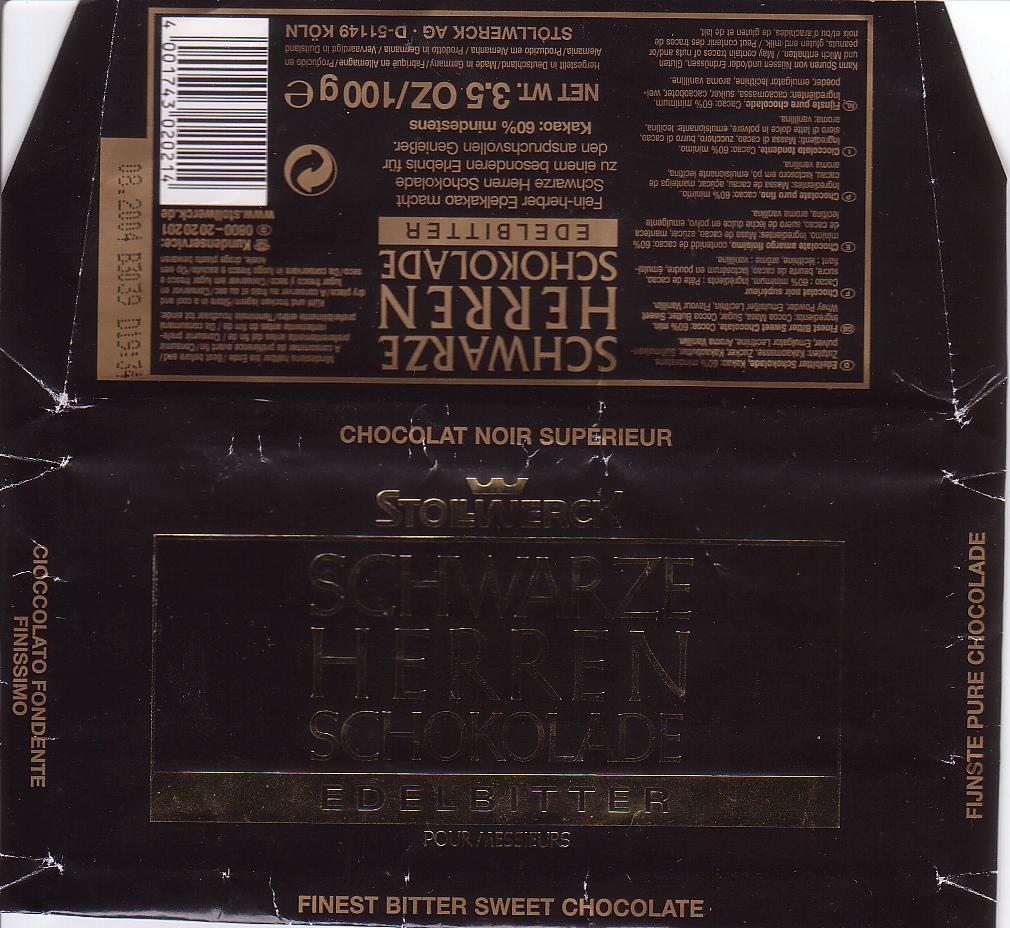 |
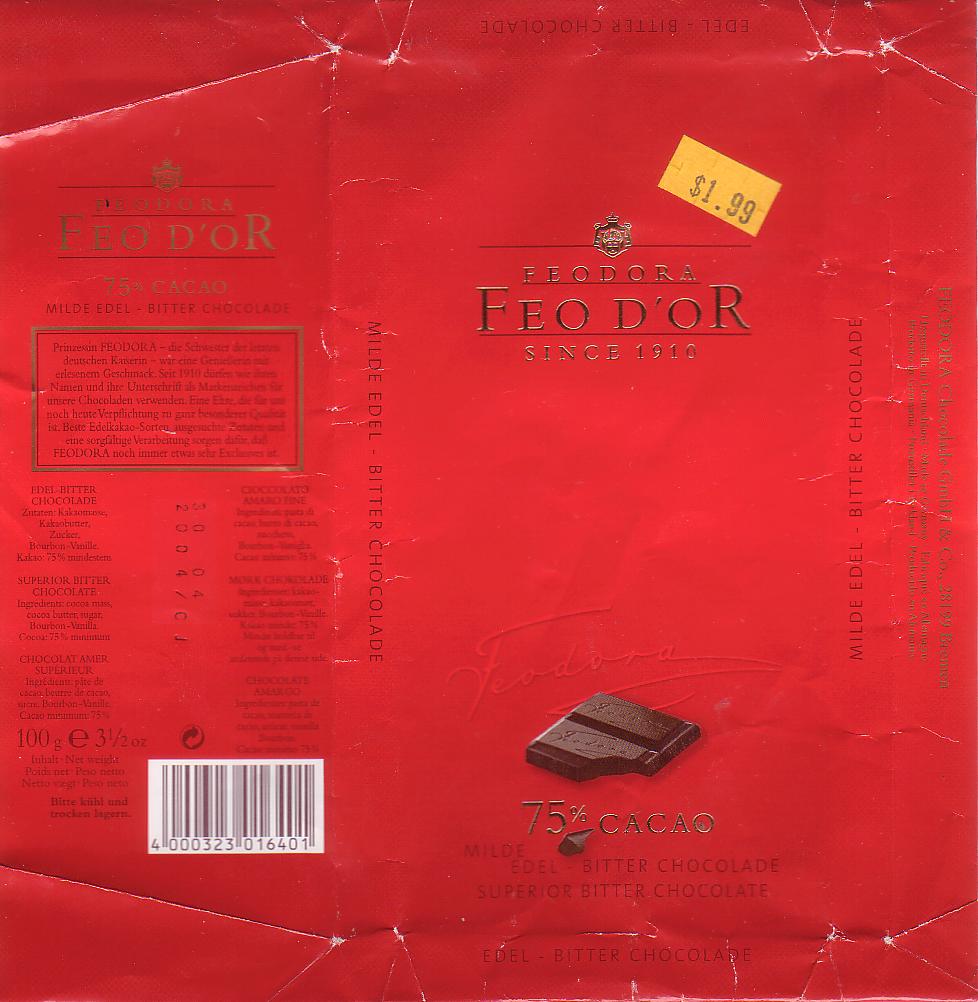 |
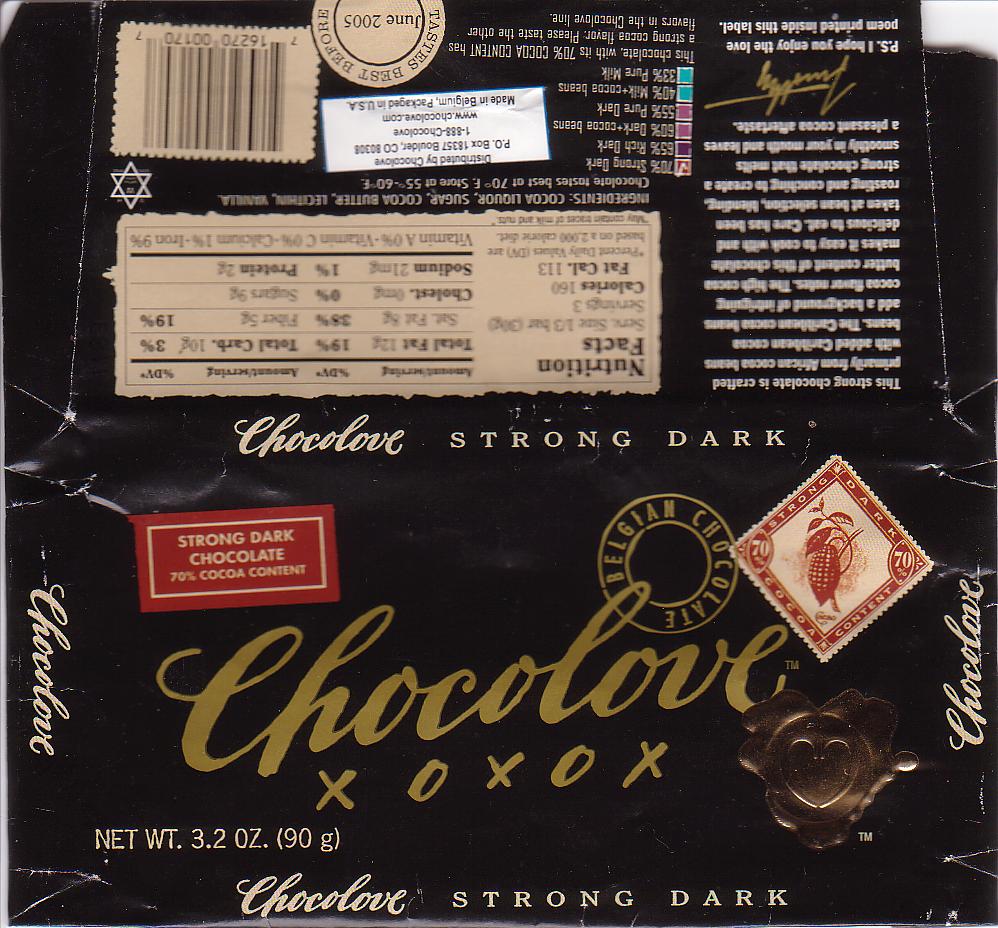 |
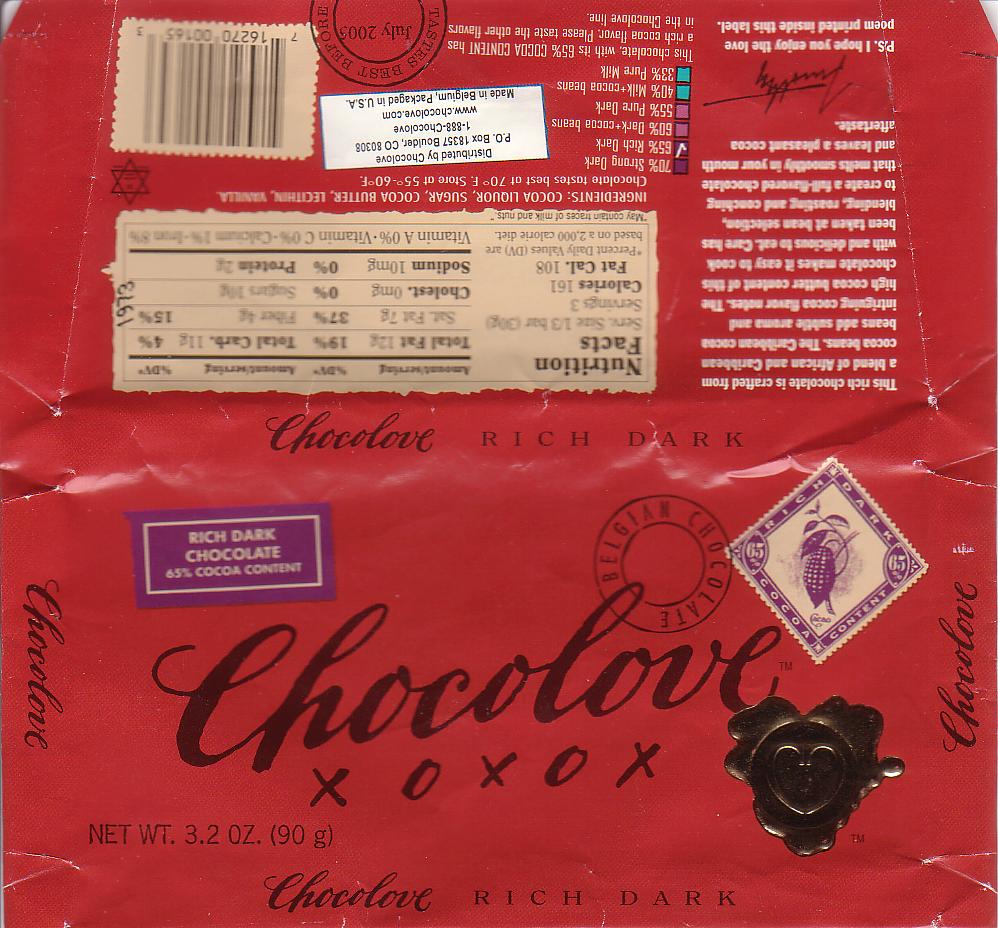 |
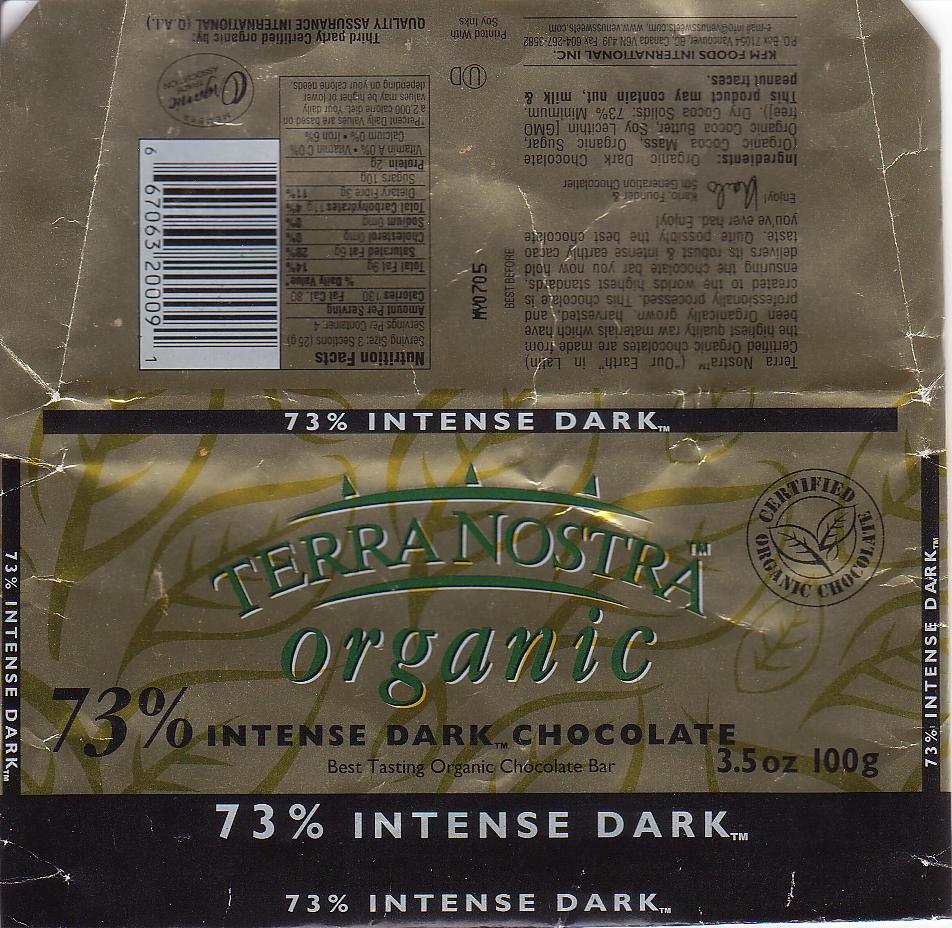 |
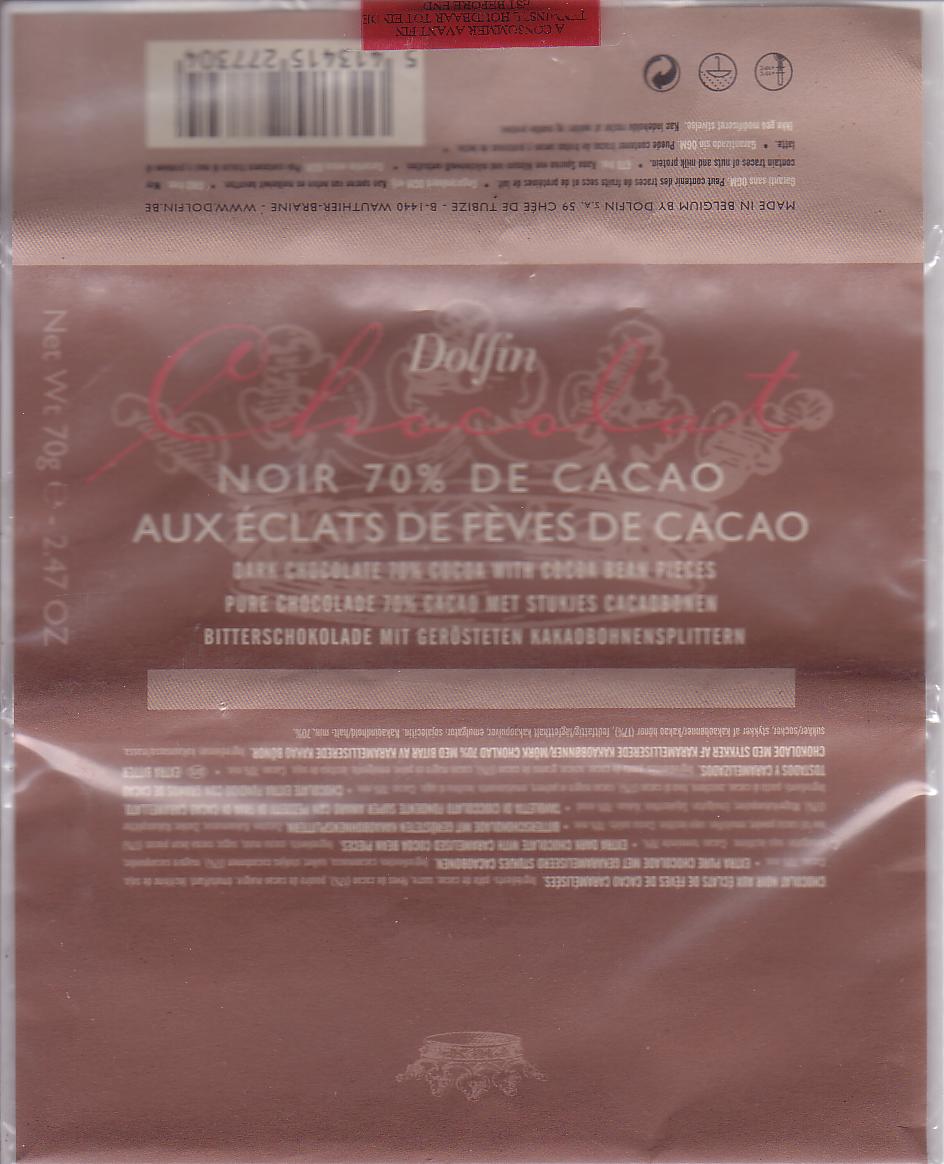 |
 |
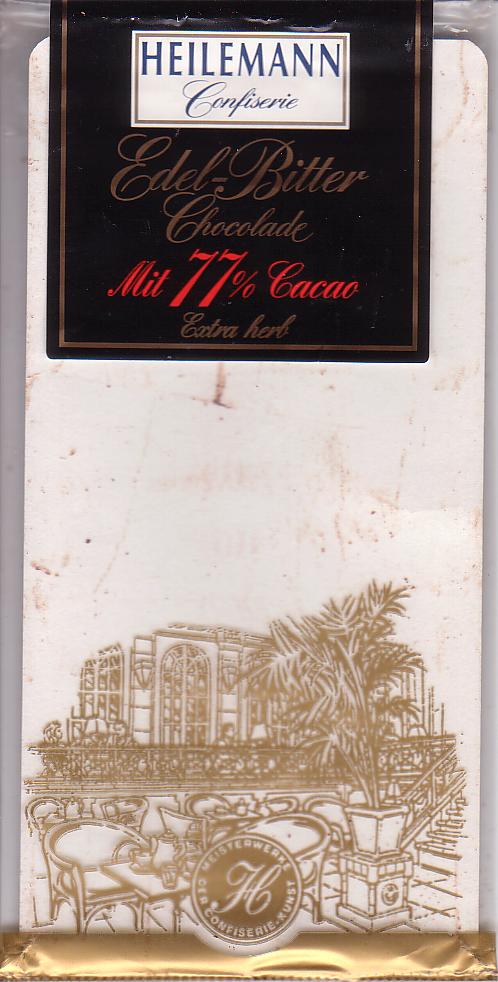 |